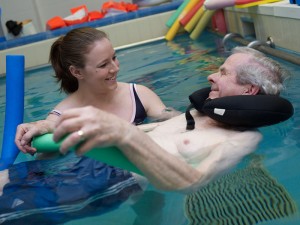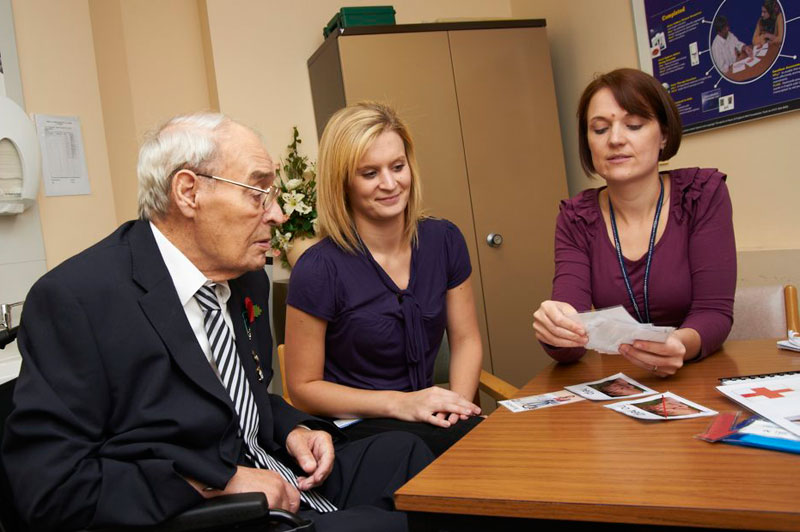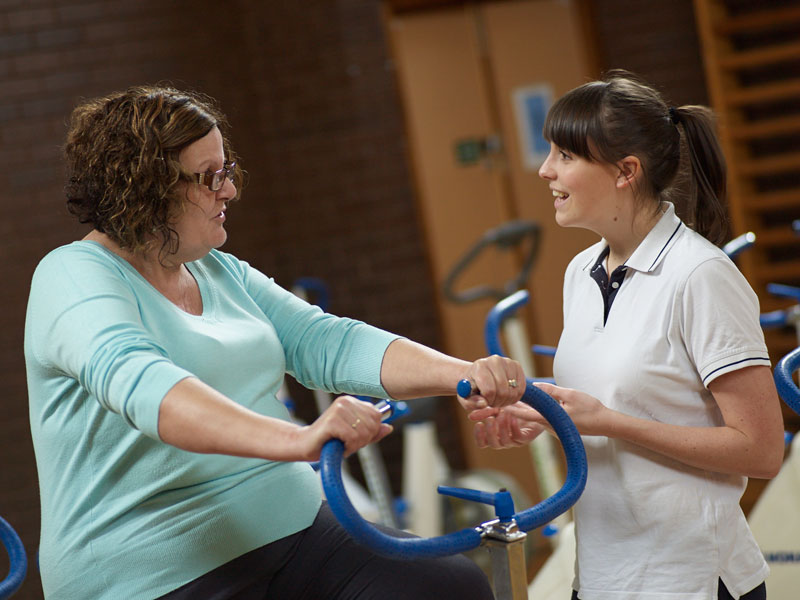 Aquatic/Hydrotherapy is a water based treatment in a specialised pool where the water is warmer and shallower. This means that everyone even non-swimmers can enjoy the benefits of exercising in water. The therapists will design a personalised exercise programme for you using various properties of the water.
Aquatic/Hydrotherapy is a water based treatment in a specialised pool where the water is warmer and shallower. This means that everyone even non-swimmers can enjoy the benefits of exercising in water. The therapists will design a personalised exercise programme for you using various properties of the water.
Treatment usually lasts for half an hour and there may be up to five patients in the pool at the same time. There are some group sessions where patients of the same condition are treated together. Due to the nature of the treatment and the need to wear a swimming costume single sex sessions can be arranged if required-please advise us if this applies to you when discussing your appointment. Exercising in the pool may not be suitable for everyone and a screening process occurs to ensure that this is the correct treatment for you.
Benefits
Hydrotherapy can be used to improve general mobility because, using the support of buoyancy, people are able to perform activities in the water that they could not do outside it. Your Therapist may use buoyancy exercises to mobilise stiff joints or stretch tight muscles. Buoyancy can also provide resistance to movement and can be used to strengthen muscle.
Most people have experienced walking in the water and know that it is harder to do than on dry land. This resistance to movement is called “drag” and can be useful to strengthen muscles in all areas of the body
The movement of the water around you can be used to improve balance and co-ordination. The support of the water can reduce the fear of falling and allows better mobility practice.
The effect of buoyancy also means that in water you do not bear your whole body weight through your feet. This can be very useful to allow people who cannot fully weight bear to start their rehabilitation much earlier than they could on dry land.
Aquatic Therapists use a combination of all these methods to produce a graded exercise programme that works towards functional movements that you need for everyday life such as walking. Using floats, flippers, bats and varying speed of movement they can very carefully adjust the difficult y of the exercises to gradually build strength, flexibility and co-ordination. They will also incorporate normal functional activities into your exercise programme (stair climbing, walking, running and rising from a chair), using the properties of the water to help you improve.
The aquatic therapy pool is a pleasant and relaxing environment for rehabilitation. Whilst relaxation may be part of your treatment, most patients will work just as hard at their exercise programme in the water, as they would at the gym!
Below is a summary of the benefits of Aquatic Therapy and a list of some of the conditions which are commonly treated:
- Increased mobility
- Reduction or pain and muscle spasm
- Improvement or maintenance of joint motion
- Strengthening of muscles
- Increased physical fitness and ability to exercise
- Regaining normal movement patterns
- Improved balance
- Improved co-ordination
- Improved posture
- Improved self confidence













